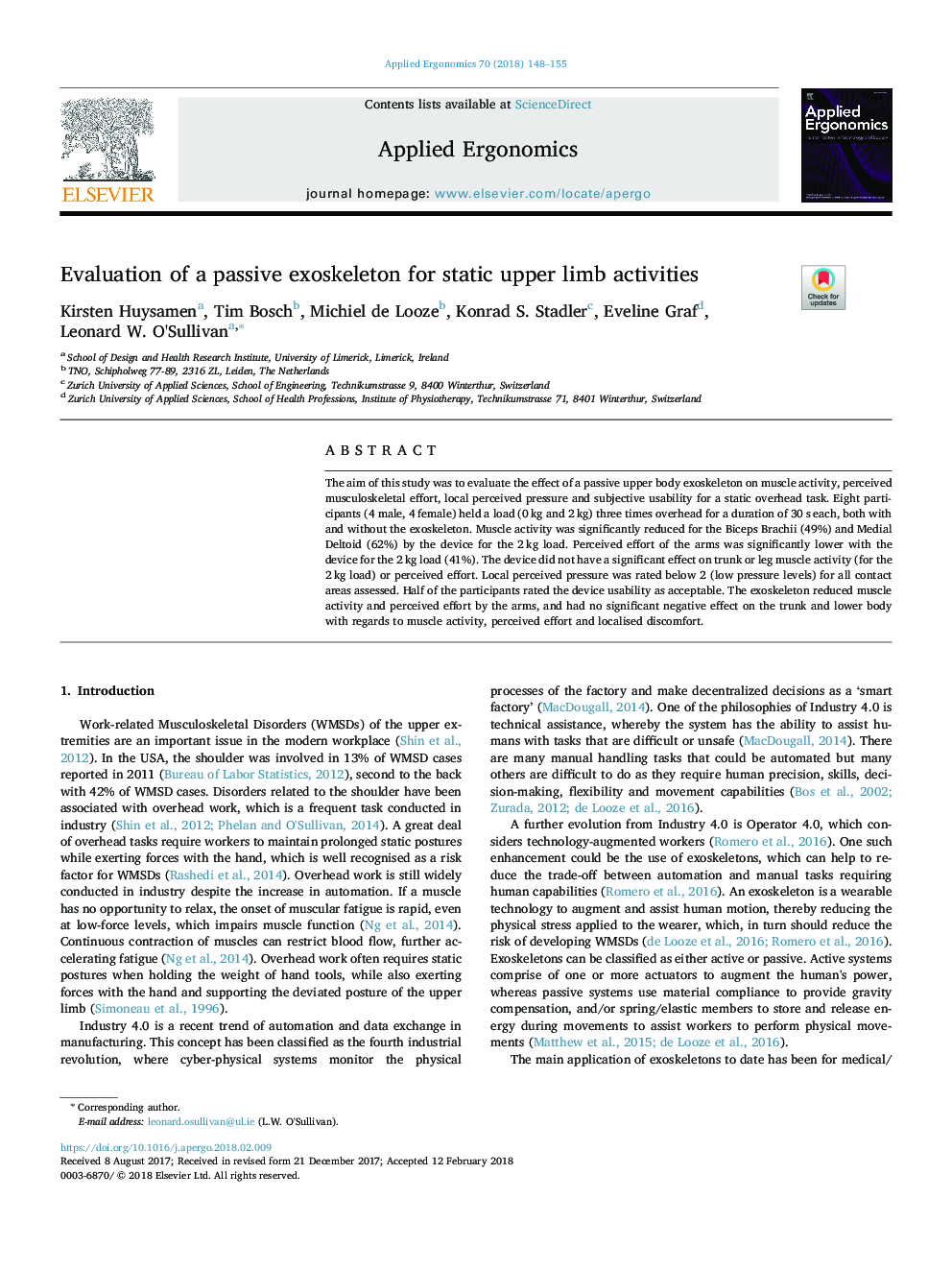| Article ID | Journal | Published Year | Pages | File Type |
|---|---|---|---|---|
| 6947606 | Applied Ergonomics | 2018 | 8 Pages |
Abstract
The aim of this study was to evaluate the effect of a passive upper body exoskeleton on muscle activity, perceived musculoskeletal effort, local perceived pressure and subjective usability for a static overhead task. Eight participants (4 male, 4 female) held a load (0â¯kg and 2â¯kg) three times overhead for a duration of 30â¯s each, both with and without the exoskeleton. Muscle activity was significantly reduced for the Biceps Brachii (49%) and Medial Deltoid (62%) by the device for the 2â¯kg load. Perceived effort of the arms was significantly lower with the device for the 2â¯kg load (41%). The device did not have a significant effect on trunk or leg muscle activity (for the 2â¯kg load) or perceived effort. Local perceived pressure was rated below 2 (low pressure levels) for all contact areas assessed. Half of the participants rated the device usability as acceptable. The exoskeleton reduced muscle activity and perceived effort by the arms, and had no significant negative effect on the trunk and lower body with regards to muscle activity, perceived effort and localised discomfort.
Related Topics
Physical Sciences and Engineering
Computer Science
Human-Computer Interaction
Authors
Kirsten Huysamen, Tim Bosch, Michiel de Looze, Konrad S. Stadler, Eveline Graf, Leonard W. O'Sullivan,
